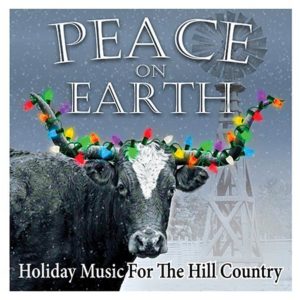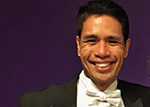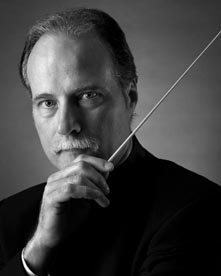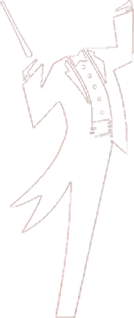
Concert Sold Out!
Concert 2
Peace On Earth
December 6, 2018
In the Bleak Midwinter
Gustav Holst
In Terra Pax (On Earth, Peace)
Gerald Finzi
Rob Saldaña, baritone soloist
Rob Saldaña came to the United States from the Phillippines as a student. He became an All-State Choir performer, earning a music scholarship to UTSA. He has performed in several operas as a member of the UTSA Lyric Theatre and Orchestra, and was a Finalist in the Classical Singer National Competition.

Jourdan Laine Howell, soprano soloist
Jourdan Laine Howell has performed leading roles in several operas including Mozart’s Don Giovanni, Le nozze di Figaro, and Così fan tutte. She holds degrees from University of North Carolina Greensboro (DMA) and University of San Antonio (MM, BM).
Jerusalem
Sir Charles Hubert Hastings Parry
Suite No. 1 from the Nutcracker Ballet
Pyotr Ilyich Tchaikovsky
Silent Night (Stille Nacht)
Franz Xaver Gruber/Arr: John Rutter

Sponsored by James Avery Artisan Jewelry
Conductor’s Letter

Gene Dowdy
Conductor & Artistic Director
Dear Symphony of the Hills’ Friends,
Our second concert of the 2018-19 season is our annual holiday performance with the Grand Symphony Chorus, under the direction of SOH Chorus Master and Schreiner music faculty member Michael Kahl.
The centerpiece of this concert is Gerald Finzi’s In Terra Pax, a profound setting of St. Luke’s nativity story interspersed with the beautiful poetry of Robert Bridges’ “Noel: Christmas Eve, 1913.” Finzi brings these texts to life with solo soprano and baritone voices with the backing of a full choir and orchestra. The Grand Symphony Chorus will be featured prominently on this program. British composers Gustav Holst and Hubert Parry set many favorite hymns and holiday carols for symphony orchestra and chorus. The second half of our holiday offering brings Tchaikovsky’s delightful and masterfully composed ballet music from The Nutcracker.
We hope the music presented at this concert will warm your family and friends during the holiday season.
With sincere appreciation for your support,
Gene Dowdy
Conductor & Artistic Director
Concert Notes
For this Christmas concert, the last concert of 2018, The Grand Symphony Chorus will participate in an enchanting performance of the compositions of Holst and Parry. In the second half we will hear Tchaikovsky’s Suite from the Nutcracker Ballet, a perennial favorite.
In the Bleak Midwinter
Gustav Holst (1874 – 1934)
Notwithstanding its ominous title, this glorious Holst melody (written for the English Hymnal in 1904-5) is a moving, romantic classic Christmas Carol for concert orchestra and chorus, an ideal choice for winter and holiday concerts. Many will find the majestic and soothing melody familiar and not at all bleak. The lyrics are based on a poem written in 1872 by the English poet Christina Rossetti. In explaining the basis for the poem, the scripture (Revelation 20.11) is quoted: “And I saw a great white throne, and Him that sat on it, from whose face the earth and heaven fled away; and there was found no place for them.” As could be expected, this biblical passage has been the topic of much discussion and debate over centuries. Holst’s interpretation is sublime.
Silent Night (Stille Nacht)
Franz Xaver Gruber/Arr: John Rutter 1787 – 1863)
The original music for Stille Nacht was composed by Franz Gruber on Christmas Eve, 1818, at the request of Joseph Morh, a Catholic Priest. Both of them were connected to St. Nicholas church (how fitting) in a small town near Salzburg, Austria, where Gruber was choirmaster and organist. Since the organ was broken, Mohr played guitar and the two men sang Stille Nacht (with the choir) for the first time at Christmas Mass the next day, December 25, 1818.
Silent Night, the favorite of Christmas carols over decades, was declared an intangible cultural heritage by UNESCO in 2011. The song has been recorded by countless singers from every music genre. The version sung by Bing Crosby is the third best-selling single of all-time.
In Terra Pax (On Earth, Peace)
Gerald Finzi (1901 – 1956)
Gerald Finzi, certainly more than most, was immersed in the cataclysm immediately following the outbreak of World War I. Despite this, and despite his own terminal decline, at the age of 44 he composed In Terra Pax, a radiant, sincerely optimistic work, a miniature masterpiece that unites emotions, images and the familiar events of the Christmas story into a compelling musical narrative that is at once personal and universal.
A series of tragedies profoundly affected Finzi in his early years. By the time he was eighteen he had lost his father, three older brothers and his much-loved music teacher, killed in action. This dreadful sequence of events specifically, and the appalling losses of the First World War generally, formed the backdrop to Finzi’s adolescence. They imbued Finzi with an acute awareness of mortality, a sense confirmed with grim finality when at the age of fifty he discovered that he was dying of Hodgkin’s Lymphoma. These experiences to a large extent account for the hint of melancholy underlying much of his music.
On a more cheerful note, Finzi’s musical inspiration sprang primarily from his love of literature and the English countryside – the same sources that inspired Elgar and Vaughan Williams. In Terra Pax was composed in 1944-45 and was Finzi’s penultimate composition.
As he related to Williams, its genesis can be traced to an event some thirty years previously, when one Christmas Eve Finzi had climbed up to the church at the top of his beloved Chosen Hill, between Gloucester and Cheltenham. The sound of the midnight bells ringing out across the frosty Gloucestershire valleys evidently made a lasting impression on him, inspiring in him the basis for In Terra Pax.
The work develops around two verses from Robert Bridges’ fine poem, ‘”Noel: Christmas Eve, 1913.” Finzi uses the poem to frame St. Luke’s account of the angels’ appearance to the shepherds. In Terra Pax is subtitled ‘Christmas Scene’, and Finzi explained that “the Nativity becomes a vision seen by a wanderer on a dark and frosty Christmas Eve in our own familiar landscape.” This placing of the Biblical story into an English pastoral context is consistent with Finzi’s close affinity with the English Romantic tradition.
As this piece develops, the two soloists and the chorus have clearly defined musical roles; the baritone soloist takes the voice of the poet, the soprano is cast as the angel, and the chorus narrates the familiar biblical text. In the opening section the poet is standing on a hill contemplating the events of the very first Christmas, the sound of the distant church bells becoming for him the sound of an angel choir. (excerpts from John Bawden, MMus, University of Surrey, UK.)
Jerusalem
Sir Charles Hubert Hastings Parry (1848 – 1956)
Among his other disciplines, Hubert Parry was a professor of composition and musical history at the Royal College of Music, ultimately becoming the Head of the College. He devoted quite some time to composition but his success was not notable. Nevertheless, Parry’s influence on later composers is widely recognized; Ralph Vaughn Williams, who studied under Parry, rated him highly as both composer and teacher.
”Jerusalem” is Parry’s best known and most successful hymn, written in 1916. It was inspired by an 1804 William Blake poem with the original title “And did those feet in ancient time,” (certainly a puzzling title which comes from the first words of the poem.) The poem was tenuously connected with the book of Revelation coupled with an apocryphal Second Coming to England. Although definitely not intended by the author, the song conjures up the trials endured by the UK during World War II, inspiring us to think of Churchill and the strength of the British during that horrible time. Like many great British hymns, it has majesty and conveys the total love of country. This gorgeous hymn imbues us with the conviction that there are still beautiful things in this embattled world.
Suite No. 1 from the Nutcracker Ballet
Pyotr Ilyich Tchaikovsky (1840 – 1893)
The Nutcracker is a two-act ballet with a score by Tchaikovsky (op. 71). The story and libretto were inspired by Alexandre Dumas’ tale “The Nutcracker,” an adaptation of E. T. A. Hoffmann’s story “The Nutcracker and the Mouse King,” written in 1816. It premiered at the Mariensky Theatre in Saint Petersburg in 1892, on a double-bill with Tchaikovsky’s opera Iolanta.
Tchaikovsky’s score has become one of his most famous compositions, in particular the pieces featured in the suite. The original score was noted for its use of a celesta, an instrument resembling an upright piano in which the hammers strike steel plates instead of strings. Today’s orchestras use a xylophone or glockenspiel to achieve the effect.
Rather surprisingly, the original ballet production was not a success; however the 20-minute suite that Tchaikovsky extracted from the ballet was. The complete Nutcracker has enjoyed enormous popularity since the late 1960s and is now performed by countless ballet companies, primarily during the Christmas season, especially in North America. It very much appeals to children. Records show that major American ballet companies generate about 40% of their annual ticket revenues from performances of The Nutcracker!

